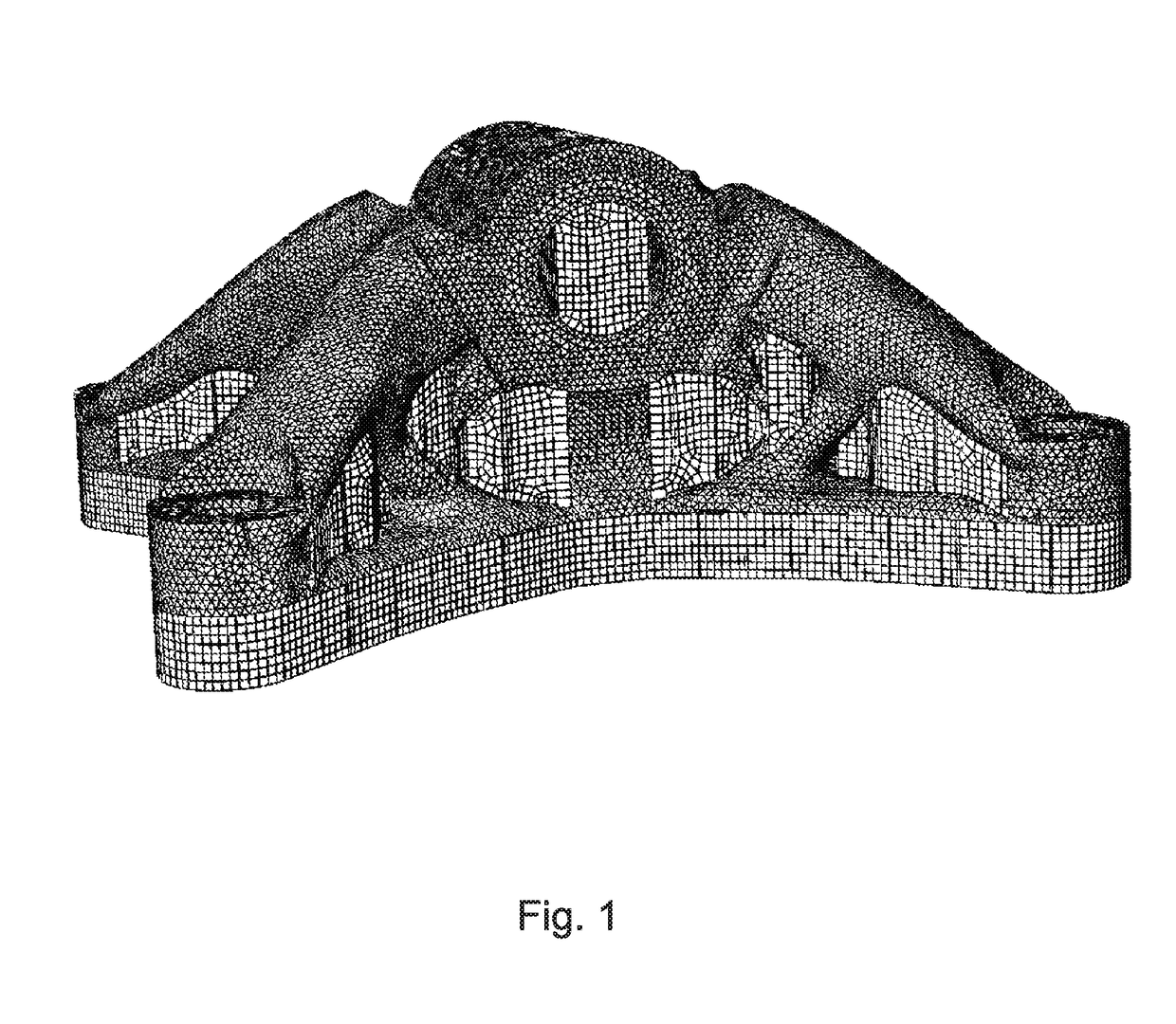Scalable finite element simulation of additive manufacturing
a technology of additive manufacturing and finite element simulation, which is applied in the direction of computer aided design, design optimisation/simulation, instruments, etc., can solve the problems of limited technology reliability, limited technology spread, and limited strength and fatigue li
- Summary
- Abstract
- Description
- Claims
- Application Information
AI Technical Summary
Benefits of technology
Problems solved by technology
Method used
Image
Examples
Embodiment Construction
[0030]A description of example embodiments of the invention follows.
[0031]Embodiments of the present invention provide accurate, scalable, and predictive 3D printing simulations using numerical methods for part-level simulations, and involve the following methodologies.
[0032]Meshing: The geometric shape of the part for which the 3D printing process is to be modeled is first discretized with finite elements. Arbitrary meshes can be used of arbitrary mesh densities. Using such meshes greatly improves on streamlining the analysis process as typically AM fabricated parts have VERY complex shapes for which uniform meshes are not really possible. An example of such a complex shape with arbitrary meshing is shown in FIG. 1
[0033]Machine information: Information related to a 3D printing machine (e.g., powder recoating sequence, laser scan path, material deposition of the printing head, etc.) that will be manufacturing the part is pre-processed with no loss of accuracy from actual data as use...
PUM
| Property | Measurement | Unit |
|---|---|---|
| Volume | aaaaa | aaaaa |
| Surface area | aaaaa | aaaaa |
| Heat | aaaaa | aaaaa |
Abstract
Description
Claims
Application Information
 Login to View More
Login to View More - R&D
- Intellectual Property
- Life Sciences
- Materials
- Tech Scout
- Unparalleled Data Quality
- Higher Quality Content
- 60% Fewer Hallucinations
Browse by: Latest US Patents, China's latest patents, Technical Efficacy Thesaurus, Application Domain, Technology Topic, Popular Technical Reports.
© 2025 PatSnap. All rights reserved.Legal|Privacy policy|Modern Slavery Act Transparency Statement|Sitemap|About US| Contact US: help@patsnap.com



